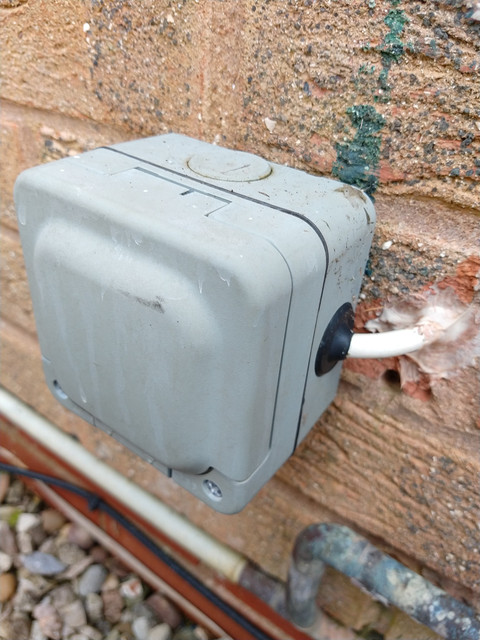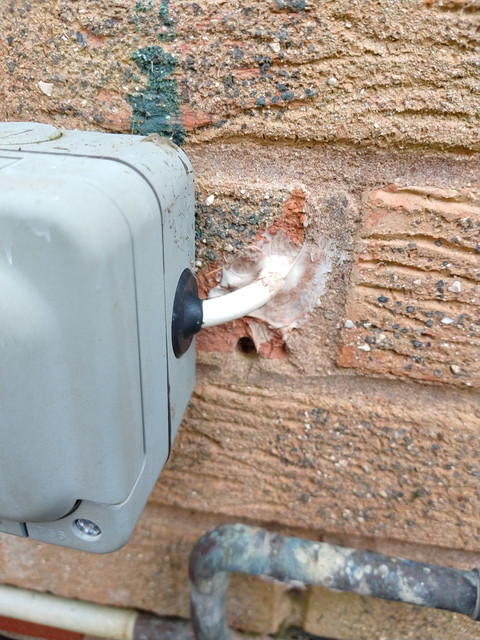Hi folks,
We are looking at a new property and noticed there was an outside Socket, which is great.
However, the cable that powers it has a 3-pin plug on the end and is plugged into a socket in the living room. (See pics). To turn the outside Socket on, you need to turn the socket in the living room on.
I'm not familiar with electrical regs, but is this acceptable? Or should we be looking to have it done properly.


We are looking at a new property and noticed there was an outside Socket, which is great.
However, the cable that powers it has a 3-pin plug on the end and is plugged into a socket in the living room. (See pics). To turn the outside Socket on, you need to turn the socket in the living room on.
I'm not familiar with electrical regs, but is this acceptable? Or should we be looking to have it done properly.












